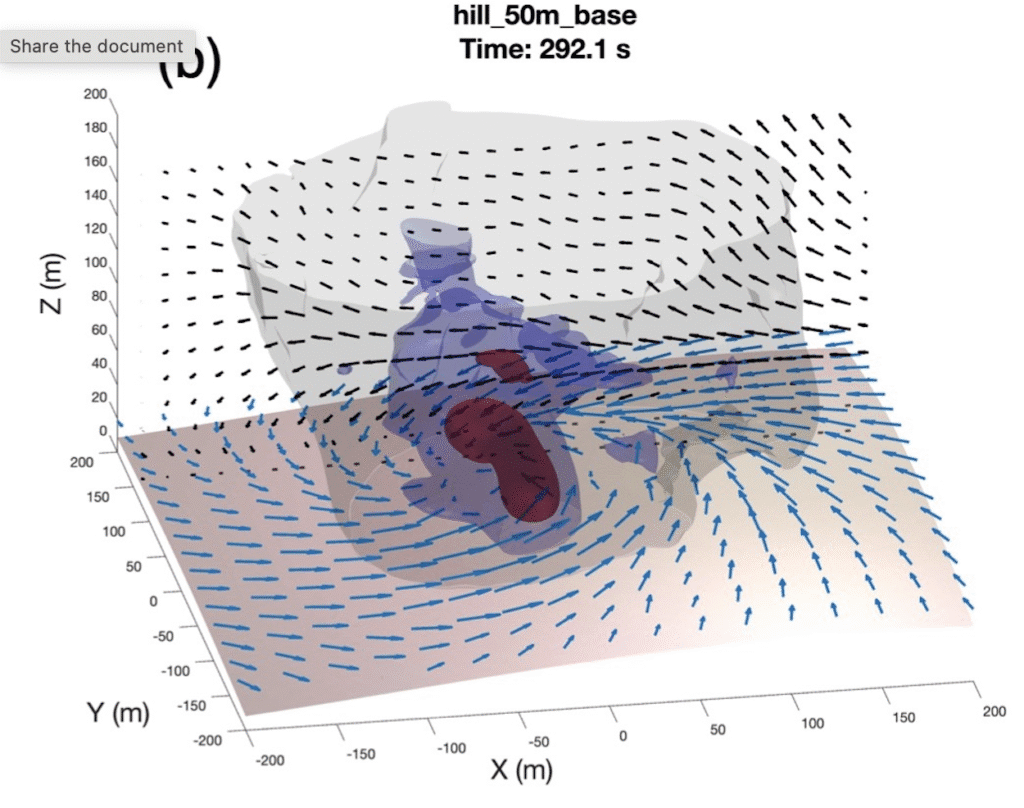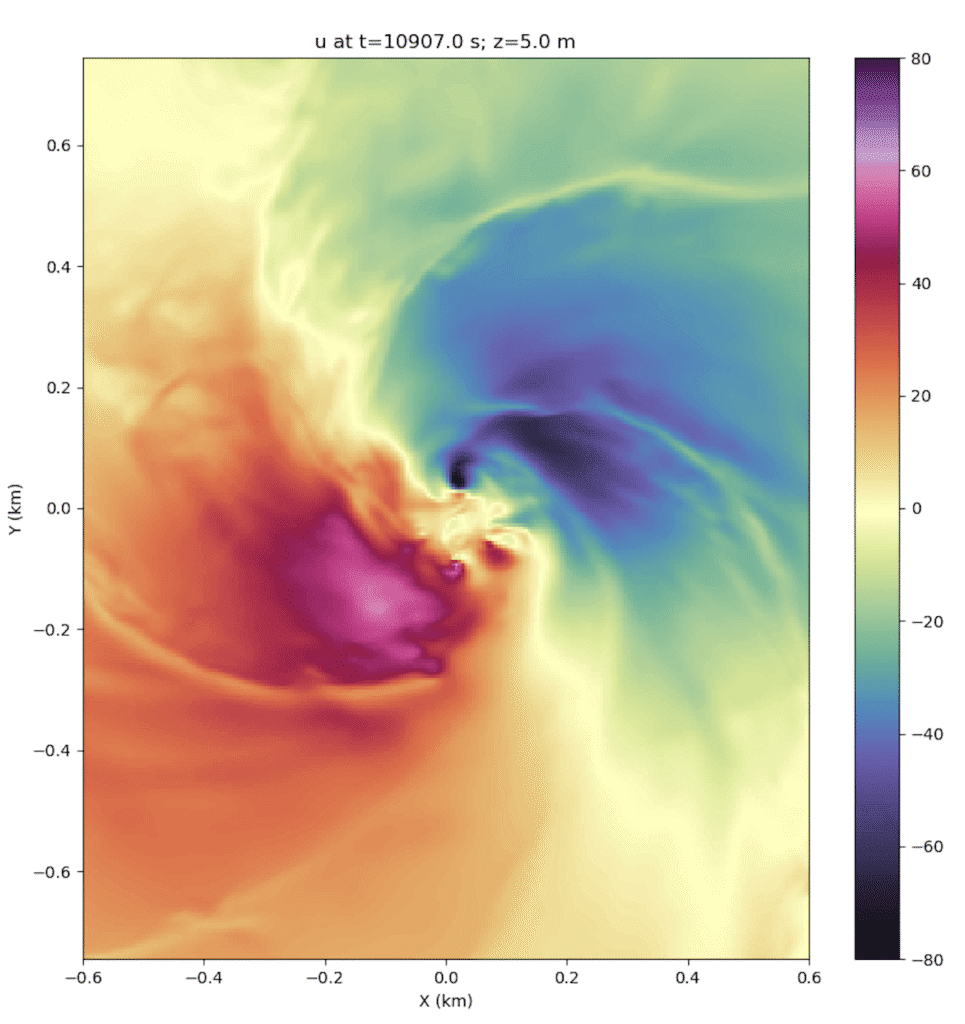My research group investigates the dynamics of supercells and tornadoes through the integration of state-of-the-art weather radar observations and high-resolution numerical modeling. We examine the microphysical and dynamical processes that contribute to tornadogenesis, identify dual-polarization precursor signatures linked to hail and damaging winds, and study how tornadoes interact with complex land surfaces. In addition, we also collaborate with electrical and computer engineers at the Advanced Radar Research Center to develop and deploy innovative radar technologies, advancing both fundamental understanding and operational applications.
Meteorological Applications of Phased Array Radars for Research and Operations
Phased array radars (PARs) are emerging technology in the atmospheric sciences with significant potential to advance both science research and operational forecasting (see our review article, Bodine and Griffin 2024). My research group leverages the rapid-scanning capabilities of PARs to understand tornado formation and evolution (Mahre et al. 2018; Griffin et al. 2019). We also analyze dual-polarization radar signatures of hailstorms, downbursts, flash flooding, and lightning to assess the operational value of PAR observations (Pearson et al. 2023; Goede et al. 2025), including data from the ARRC’s Horus radar (Palmer et al. 2023).
Our work leverages our custom radar simulators to emulate future PAR scanning strategies and evaluate these systems could improve operational forecasting (Mahre et al. 2020; Cohen et al. 2025). In particular, we are developing machine learning-based approaches – convolutional neural networks and reinforcement learning – to optimize PAR scanning modes and enhance operational utility.
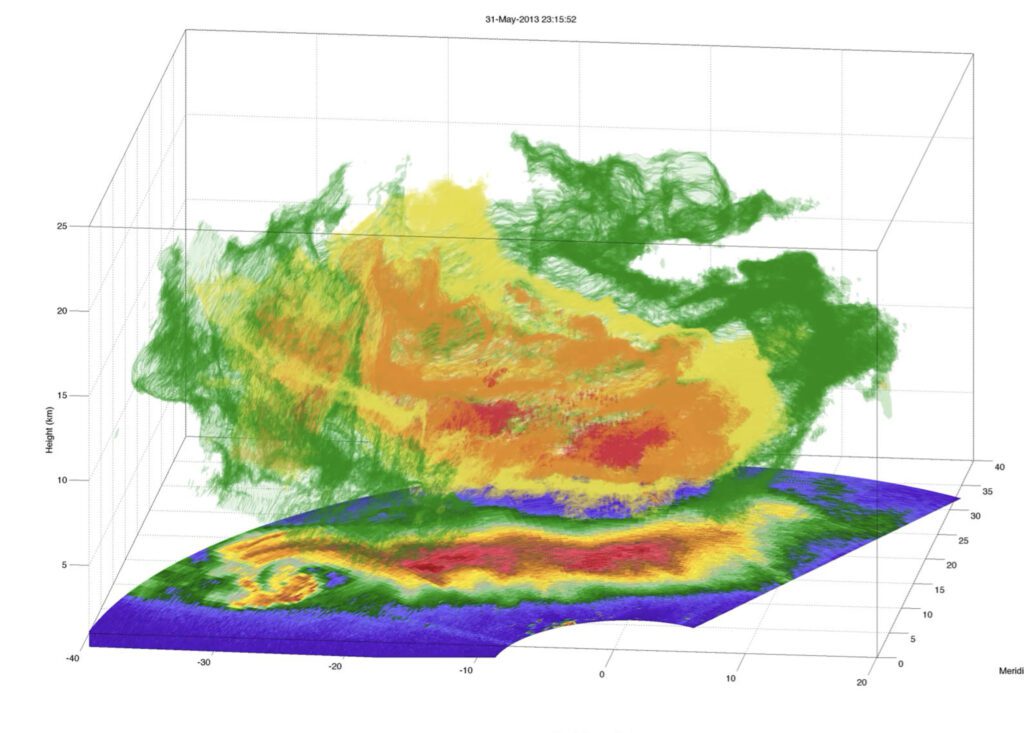
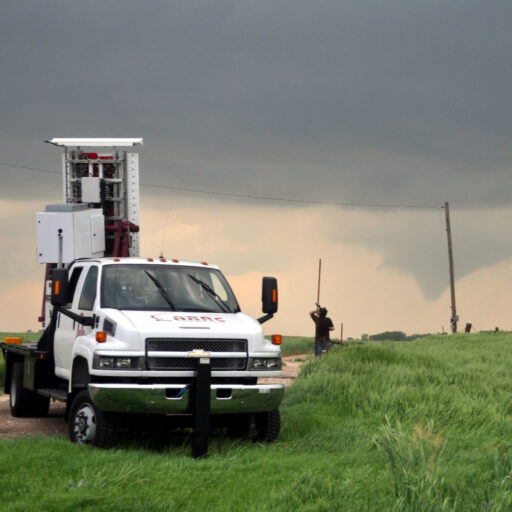
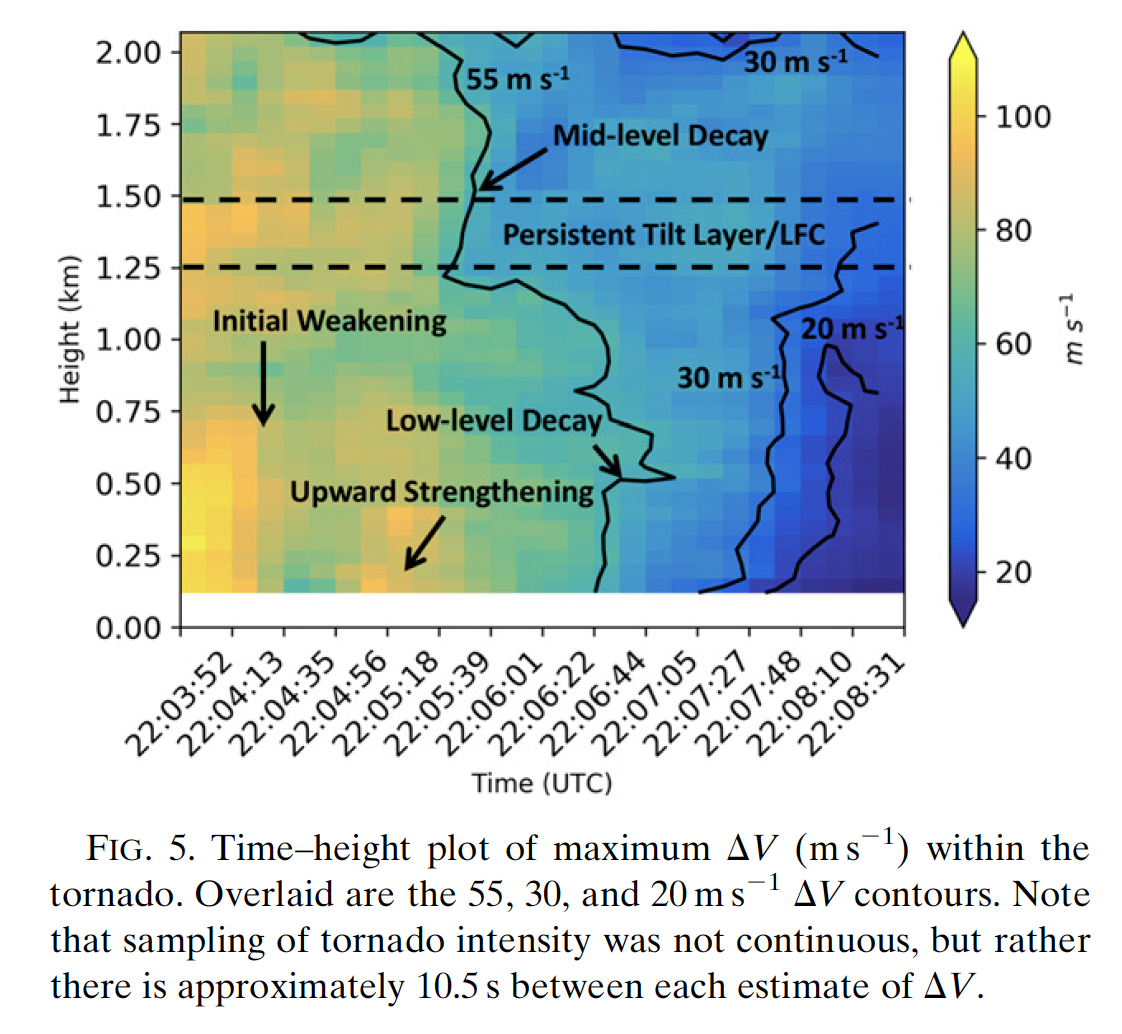
Examining Dual-Polarization Radar Signatures of Supercells and Tornadoes Using Observations and Numerical Simulations
Dual-polarization radar signatures of supercells and tornadoes are valuable for discriminating between tornadic and nontornadic supercells, supporting operational forecasting. When tornadoes loft debris, dual-polarization radar signatures not only enhance tornado detection but allow characterization of damage severity (Bodine et al. 2013; Cross et al. 2023; Schneider et al. 2025).
My research group combines high-resolution radar observations and numerical simulations to understand the physical relationship between dual-polarization radar signatures and microphysical and kinematic properties of supercells. In addition, we analyze high-resolution dual-polarization radar observations from field campaigns, such as those collected by the Rapid X-band Polarimetric Radar and Horus, to rapidly evolving microphysical processes and supercell and tornado dynamics.
Understanding Tornado Dynamics and Tornado Formation Processes Using High-Resolution Modeling
Advancing our understanding of tornado formation and the three-dimensional structure of tornado wind speeds is essential for improving operational severe weather warnings and developing strategies to wind-related hazards. My research group employs high-resolution numerical simulations to investigate how tornadoes interact with complex land surfaces, vegetation, topography, and urban environments (Satrio et al. 2020, Anderson et al. 2022, Lombardo et al. 2025). Our most recent work uses Cloud Model 1 (CM1) to conduct high-resolution, turbulent simulations of tornadoes to capture the two-way interactions between tornado wind fields and the built environment, demonstrating how neighborhoods can significantly alter near-surface wind speeds and increase damage variability.
